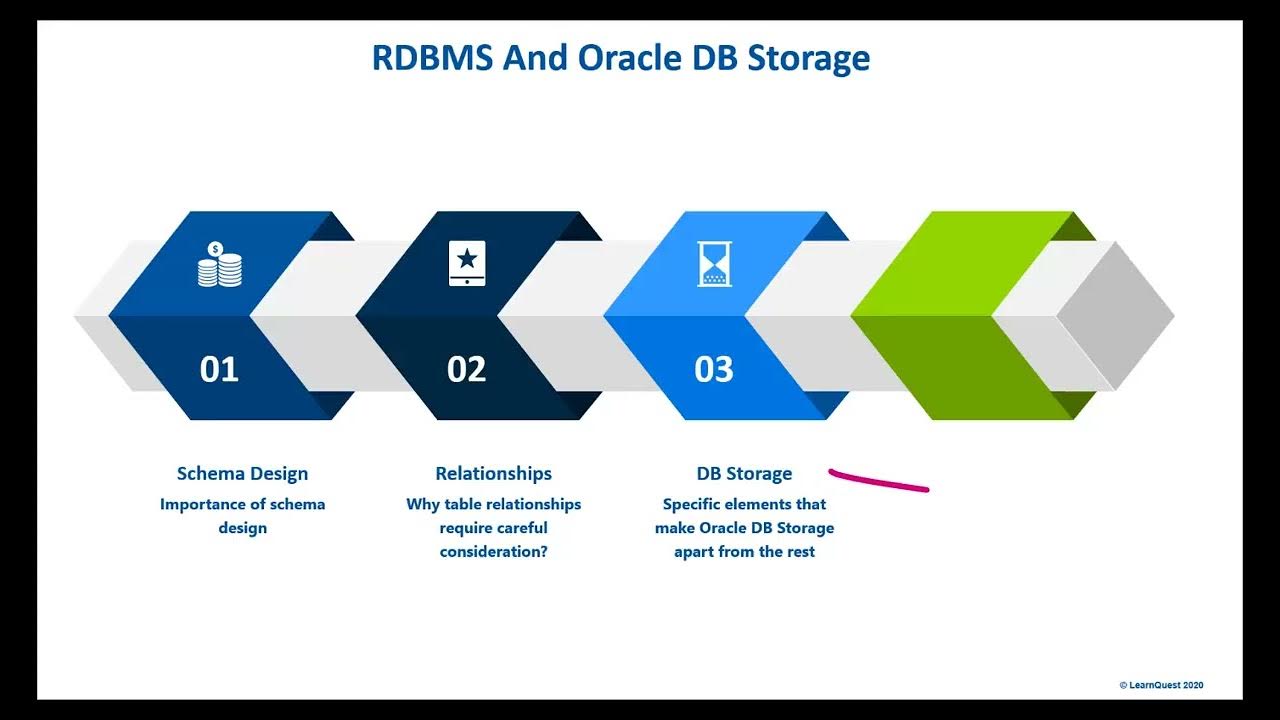01 : Pengenalan Database
Summary
TLDRThis video script introduces the concept of database design, emphasizing its importance in the development process of a database. It differentiates between data, information, and databases, and explains the role of a database administrator. The script outlines the historical evolution of databases, from the 1960s to the rise of the internet in the 1990s, and mentions various DBMS like MySQL, PostgreSQL, and SQL Server. It also discusses the necessity of data modeling and normalization in creating efficient databases, using the example of a student registration system to illustrate the process.
Takeaways
- 📚 The video introduces the concept of database design and its importance in the development process of databases.
- 🌐 It mentions the necessity of understanding the difference between data, information, and databases before diving into database design.
- 🔍 The script explains that data is raw and unprocessed, while information is the result of processing data through a specific model or formula.
- 🏢 The video outlines the role of a database administrator in managing and maintaining the database, including handling issues like corruption or data loss.
- 📈 The historical development of databases is briefly touched upon, from the 1960s to the emergence of SQL and the internet boom in the 1990s.
- 🛠️ Database design is presented as the first step in the database development process, akin to architectural planning before construction.
- 🔄 The script uses the analogy of a student registration system to illustrate the need for understanding business processes and designing a database efficiently to avoid data duplication.
- 🌟 It highlights the widespread use of databases in various platforms like social media, banking, and other services, indicating their integral role in modern technology.
- 🔑 The importance of database management systems (DBMS) is emphasized, which organize and facilitate the manipulation of data through queries.
- 🔍 The video promises to cover more about DBMS in subsequent materials, suggesting a series of educational content on the topic.
- 🙏 The video concludes with a call to action for viewers to stay tuned for the next video and a thank you note in a culturally respectful manner.
Q & A
What is the main topic of the video script?
-The main topic of the video script is database design, including an introduction to databases, the difference between data and information, and the importance of database design before creating a database.
Why is it important to design a database before creating one?
-Designing a database before creating one is important to ensure efficiency, avoid data duplication, and to understand the business processes that the database needs to support.
What is the difference between data and information according to the script?
-Data is something that has meaning to the recipient and is unprocessed, while information is the result of processing data through a specific model or formula, which can be used to increase knowledge for the recipient.
What is a database?
-A database is a centralized and structured collection of data stored in a computer system, which provides facilities for retrieving, adding, modifying, and deleting data as needed by the user.
What is the role of a database administrator?
-A database administrator is responsible for managing the database, ensuring its integrity, and addressing any issues such as corruption, deletion, or anomalies that may occur.
What are some examples of database management systems mentioned in the script?
-Examples of database management systems mentioned in the script include MySQL, PostgreSQL, MongoDB, Access, SQL Server, and others.
What is the significance of normalization in database design?
-Normalization in database design is significant for organizing data to minimize redundancy and dependency by applying rules to structure data in a way that supports data integrity and efficient data retrieval.
How does the script relate the concept of a database to everyday life?
-The script relates the concept of a database to everyday life by mentioning examples such as Facebook, Instagram, and banking systems, where databases are used indirectly to store and manage data like photos, messages, customer information, and transactions.
What is the purpose of the Entity-Relationship Diagram in database design?
-The purpose of the Entity-Relationship Diagram in database design is to visually represent the structure of data and the relationships between different entities, which helps in understanding and organizing the data for the database.
What is the historical development of databases mentioned in the script?
-The script mentions the historical development of databases starting from the 1960s with Wang, followed by the proposal of the relational model by Codd in 1971-72, the introduction of SQL in the 1980s, and the booming of the internet and databases in the 1990s.
What is the script's final message to the audience regarding the upcoming video series?
-The script's final message is a reminder for the audience not to miss the next video in the series on database design, expressing hope that the content will enlighten and enhance their understanding of database concepts.
Outlines

このセクションは有料ユーザー限定です。 アクセスするには、アップグレードをお願いします。
今すぐアップグレードMindmap

このセクションは有料ユーザー限定です。 アクセスするには、アップグレードをお願いします。
今すぐアップグレードKeywords

このセクションは有料ユーザー限定です。 アクセスするには、アップグレードをお願いします。
今すぐアップグレードHighlights

このセクションは有料ユーザー限定です。 アクセスするには、アップグレードをお願いします。
今すぐアップグレードTranscripts

このセクションは有料ユーザー限定です。 アクセスするには、アップグレードをお願いします。
今すぐアップグレード5.0 / 5 (0 votes)






